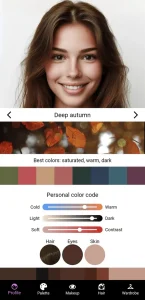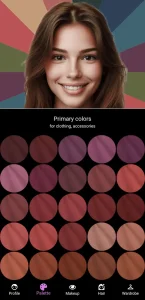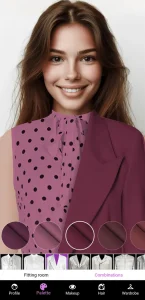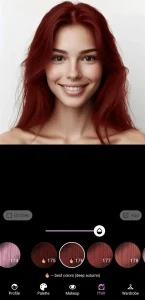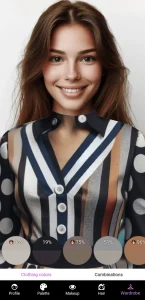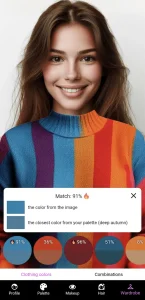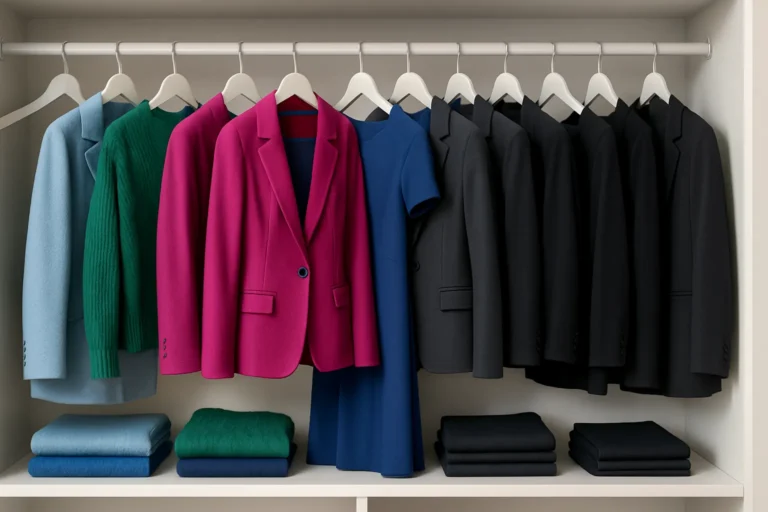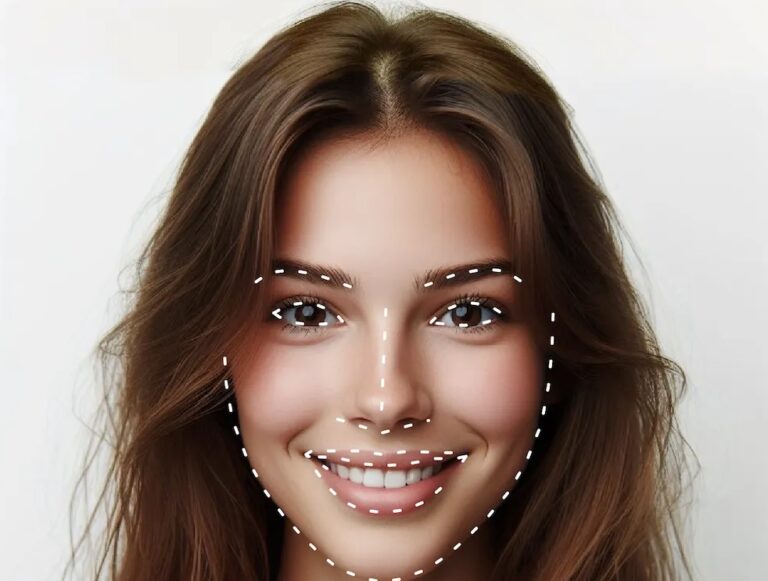Color
is more than just a visual element; it has the power to influence
emotions
and
perceptions
, especially in the world of fashion. The
psychology of color
plays an important part in forming these influences.This article explores how different
colors
can evoke
positive feelings
and how to choose the right hues for your
wardrobe
.From learning what different colors represent to advice on creating a
cohesive color palette
, we will look at how color choices can reflect
personality
.Join us as we discover the
vibrant impact of color
in fashion, examining how
bright colors
and
color combinations
can create a
positive energy
and influence
personal style
!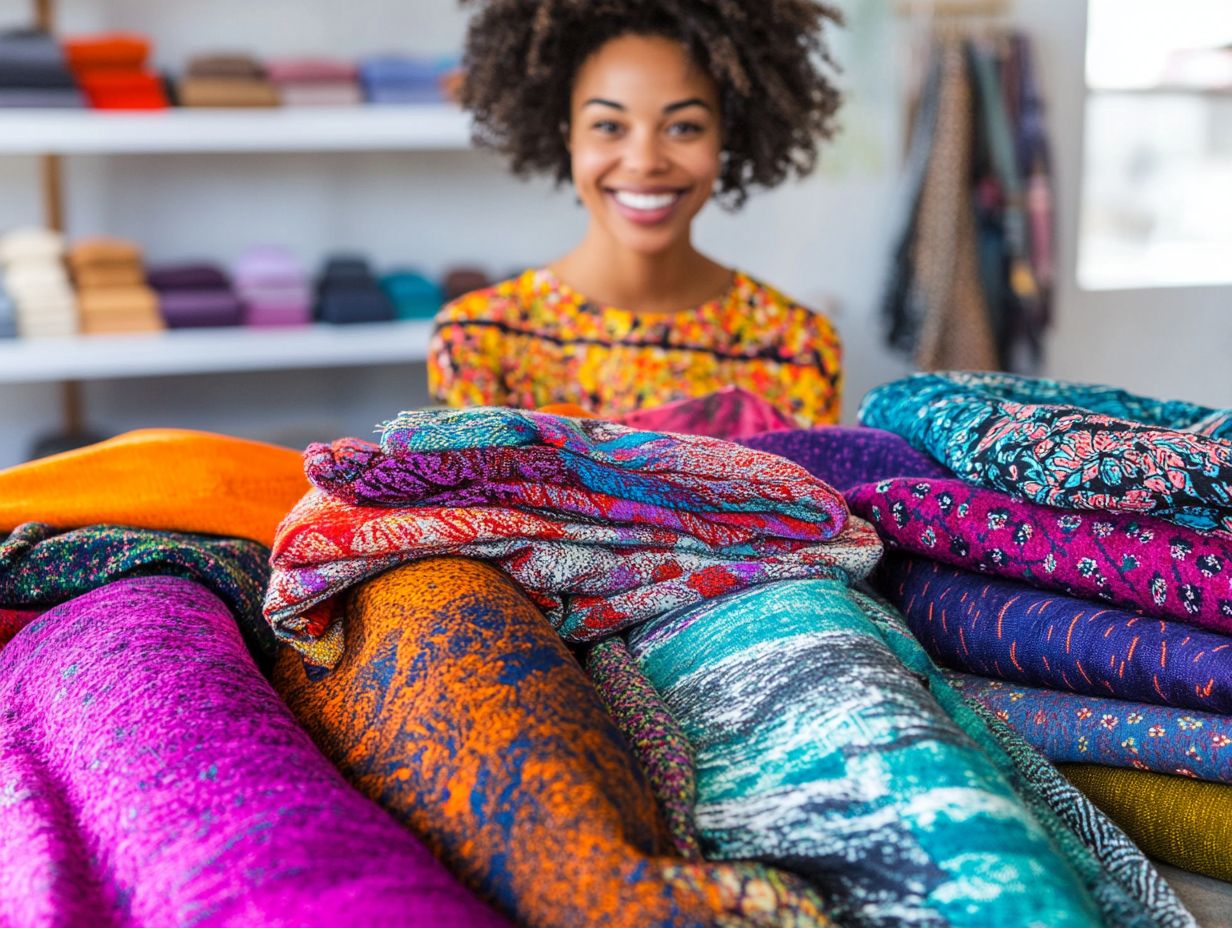 The psychology of color in fashion significantly affects how people behave, feel, and express themselves. Different colors can evoke varying feelings, making them essential tools in fashion branding and marketing strategies.
Color symbolism
and
color associations
guide how colors are used in marketing to create specific
emotional responses
.Knowing color theory helps people choose their color schemes well, improving their style and self-assurance. The emotional impact of hues extends beyond mere aesthetics; it can significantly influence mood and well-being, showcasing the importance of
color preferences
and
emotional colors
.As fashion trends evolve, so does the significance of color psychology, showcasing its enduring impact on both personal and market levels.
The psychology of color in fashion significantly affects how people behave, feel, and express themselves. Different colors can evoke varying feelings, making them essential tools in fashion branding and marketing strategies.
Color symbolism
and
color associations
guide how colors are used in marketing to create specific
emotional responses
.Knowing color theory helps people choose their color schemes well, improving their style and self-assurance. The emotional impact of hues extends beyond mere aesthetics; it can significantly influence mood and well-being, showcasing the importance of
color preferences
and
emotional colors
.As fashion trends evolve, so does the significance of color psychology, showcasing its enduring impact on both personal and market levels.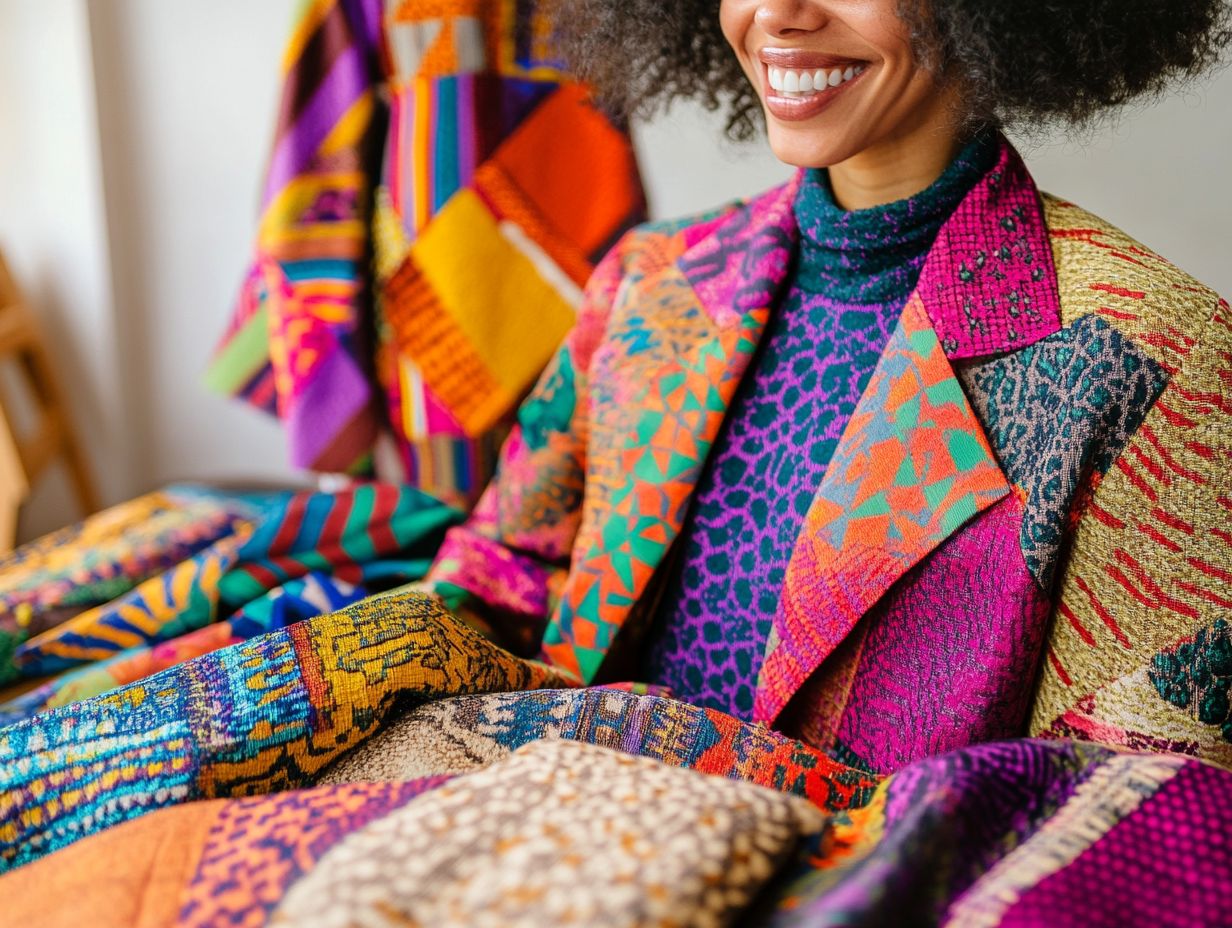 Colors that create positive feelings are important for improving happiness and well-being, affecting both fashion choices and personal expression. These
uplifting colors
can enhance
emotional well-being
and influence
color mood
.Bright colors like yellow and orange are often associated with joy, optimism, and energy, while softer shades like pastels can promote tranquility and relaxation.The emotional impact of these colors can significantly alter perceptions in fashion, making them essential tools for expressing positivity.Knowing the meaning of colors helps people pick ones that match their personal style and feelings, resulting in confident and strong decisions. Understanding
color meanings
aligns with recognizing
color influence
on
confidence
and mood.
Colors that create positive feelings are important for improving happiness and well-being, affecting both fashion choices and personal expression. These
uplifting colors
can enhance
emotional well-being
and influence
color mood
.Bright colors like yellow and orange are often associated with joy, optimism, and energy, while softer shades like pastels can promote tranquility and relaxation.The emotional impact of these colors can significantly alter perceptions in fashion, making them essential tools for expressing positivity.Knowing the meaning of colors helps people pick ones that match their personal style and feelings, resulting in confident and strong decisions. Understanding
color meanings
aligns with recognizing
color influence
on
confidence
and mood.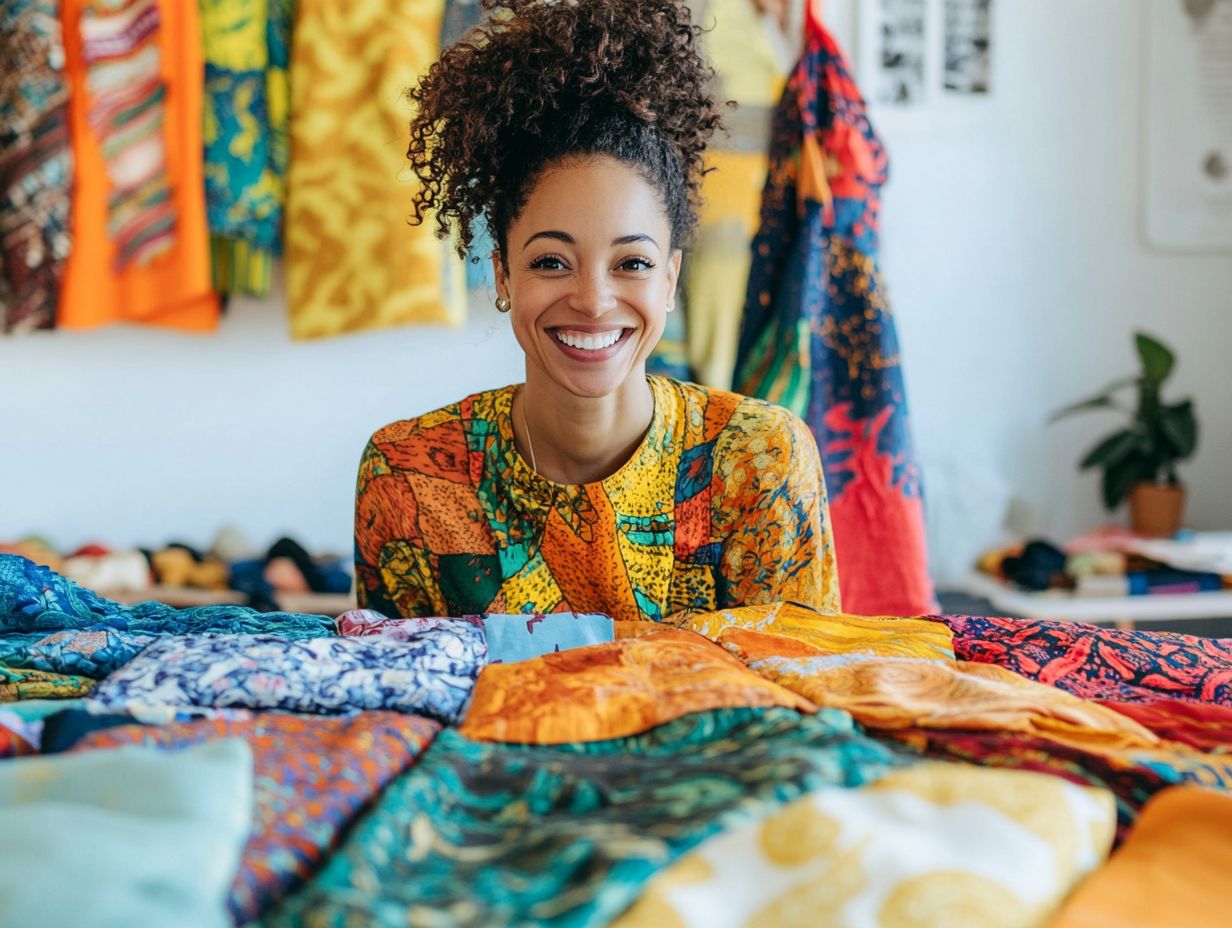 Choosing the right colors for an outfit is essential for personal expression and confidence, as it can significantly affect how one feels and is perceived.
Color selection
and understanding of
color harmony
play vital roles in this process.Choosing a color palette that matches your skin tone can improve how you look and make you feel good. This process involves
color awareness
and an appreciation for
aesthetic appeal
.Knowing how to mix colors, like pairing opposite colors on the color wheel or following seasonal styles, can help people choose clothes that match their personality and taste.Being aware of how colors affect us can encourage people to pick shades that make them feel better and more confident, resulting in more powerful clothing choices.
Choosing the right colors for an outfit is essential for personal expression and confidence, as it can significantly affect how one feels and is perceived.
Color selection
and understanding of
color harmony
play vital roles in this process.Choosing a color palette that matches your skin tone can improve how you look and make you feel good. This process involves
color awareness
and an appreciation for
aesthetic appeal
.Knowing how to mix colors, like pairing opposite colors on the color wheel or following seasonal styles, can help people choose clothes that match their personality and taste.Being aware of how colors affect us can encourage people to pick shades that make them feel better and more confident, resulting in more powerful clothing choices.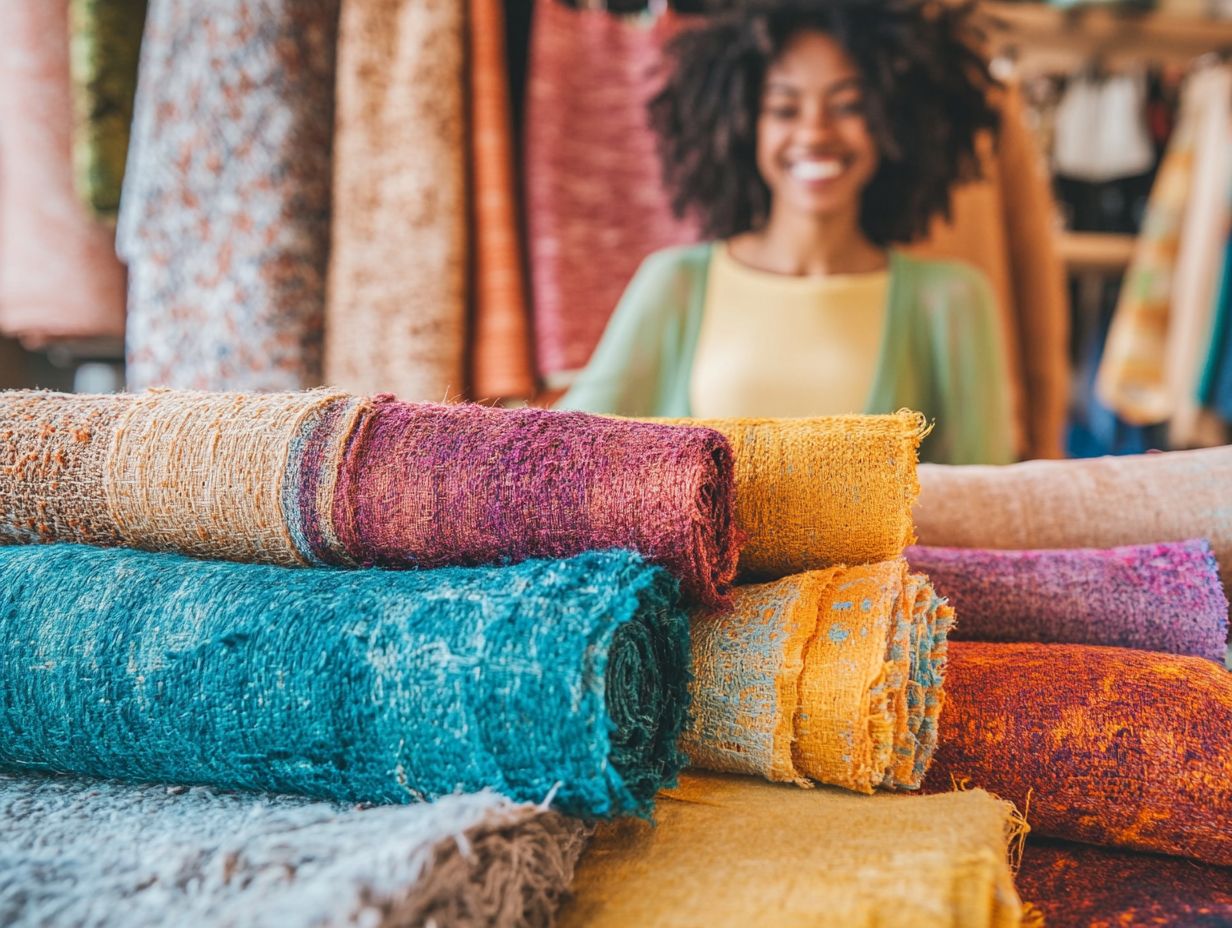 Using color to express oneself is a powerful means of communication in fashion, art, and personal branding. Color choices can reflect personality traits, evoke emotional responses, and impact how individuals are perceived by others.In fashion, certain colors can increase self-esteem and show confidence, while others may suggest elegance or playfulness. Learning how we see color can help people choose clothes that express who they are and how they feel.
Using color to express oneself is a powerful means of communication in fashion, art, and personal branding. Color choices can reflect personality traits, evoke emotional responses, and impact how individuals are perceived by others.In fashion, certain colors can increase self-esteem and show confidence, while others may suggest elegance or playfulness. Learning how we see color can help people choose clothes that express who they are and how they feel.
The Psychology of Color in Fashion
 The psychology of color in fashion significantly affects how people behave, feel, and express themselves. Different colors can evoke varying feelings, making them essential tools in fashion branding and marketing strategies.
Color symbolism
and
color associations
guide how colors are used in marketing to create specific
emotional responses
.Knowing color theory helps people choose their color schemes well, improving their style and self-assurance. The emotional impact of hues extends beyond mere aesthetics; it can significantly influence mood and well-being, showcasing the importance of
color preferences
and
emotional colors
.As fashion trends evolve, so does the significance of color psychology, showcasing its enduring impact on both personal and market levels.
The psychology of color in fashion significantly affects how people behave, feel, and express themselves. Different colors can evoke varying feelings, making them essential tools in fashion branding and marketing strategies.
Color symbolism
and
color associations
guide how colors are used in marketing to create specific
emotional responses
.Knowing color theory helps people choose their color schemes well, improving their style and self-assurance. The emotional impact of hues extends beyond mere aesthetics; it can significantly influence mood and well-being, showcasing the importance of
color preferences
and
emotional colors
.As fashion trends evolve, so does the significance of color psychology, showcasing its enduring impact on both personal and market levels.How Color Affects Feelings
Colors profoundly impact human emotions and can evoke specific feelings and responses, making them a powerful element in fashion and personal expression. People often link different colors with feelings: bright colors can make you feel joyful and lively, while cool colors might make you feel calm and relaxed.Knowing how colors relate to emotions helps people choose clothing that can improve their mood and confidence. The psychology of color plays a significant role in shaping consumer behavior, influencing trends and brand perceptions.For instance, the deep richness of red is often linked to passion and excitement, making it a popular choice for special occasions and statements in fashion.On the other hand, lighter colors like lavender can create a peaceful feeling, attracting those who want a calm, graceful look.People often choose specific colors in their clothing because they like how they look and because these colors can express their feelings or tell a story.These days, informed buyers understand how brand colors can influence what they buy, combining their personal style with popular design trends.By paying attention to color, people can connect with fashion in a more genuine way, using color identity as a tool for self-expression not only in fashion but also in home spaces.Colors that Evoke Positive Emotions
 Colors that create positive feelings are important for improving happiness and well-being, affecting both fashion choices and personal expression. These
uplifting colors
can enhance
emotional well-being
and influence
color mood
.Bright colors like yellow and orange are often associated with joy, optimism, and energy, while softer shades like pastels can promote tranquility and relaxation.The emotional impact of these colors can significantly alter perceptions in fashion, making them essential tools for expressing positivity.Knowing the meaning of colors helps people pick ones that match their personal style and feelings, resulting in confident and strong decisions. Understanding
color meanings
aligns with recognizing
color influence
on
confidence
and mood.
Colors that create positive feelings are important for improving happiness and well-being, affecting both fashion choices and personal expression. These
uplifting colors
can enhance
emotional well-being
and influence
color mood
.Bright colors like yellow and orange are often associated with joy, optimism, and energy, while softer shades like pastels can promote tranquility and relaxation.The emotional impact of these colors can significantly alter perceptions in fashion, making them essential tools for expressing positivity.Knowing the meaning of colors helps people pick ones that match their personal style and feelings, resulting in confident and strong decisions. Understanding
color meanings
aligns with recognizing
color influence
on
confidence
and mood.Meanings and Effects of Different Colors
Each color carries unique meanings and effects that can influence the way individuals perceive themselves and are perceived by others, illustrating the color impact on personal style and social perceptions . Warm colors such as red and orange often symbolize energy and assertiveness, while cool colors like blue and green are associated with calmness and sophistication. These color associations reflect the psychological effects of colors in textiles .These associations can stem from psychological studies that emphasize how colors evoke feelings and emotions in different contexts. For instance, bright and intense shades of yellow may evoke feelings of happiness and optimism, contrasting with soft pastels that can create a sense of tranquility.The intensity of these colors greatly influences how they are seen; a bright red might suggest confidence, while a dull red could create feelings of warmth and friendliness.By recognizing these nuances in color intensity, individuals can make more informed decisions about their wardrobe, ultimately embodying the traits they wish to express through their style choices.Choosing the Right Colors for Your Outfit
 Choosing the right colors for an outfit is essential for personal expression and confidence, as it can significantly affect how one feels and is perceived.
Color selection
and understanding of
color harmony
play vital roles in this process.Choosing a color palette that matches your skin tone can improve how you look and make you feel good. This process involves
color awareness
and an appreciation for
aesthetic appeal
.Knowing how to mix colors, like pairing opposite colors on the color wheel or following seasonal styles, can help people choose clothes that match their personality and taste.Being aware of how colors affect us can encourage people to pick shades that make them feel better and more confident, resulting in more powerful clothing choices.
Choosing the right colors for an outfit is essential for personal expression and confidence, as it can significantly affect how one feels and is perceived.
Color selection
and understanding of
color harmony
play vital roles in this process.Choosing a color palette that matches your skin tone can improve how you look and make you feel good. This process involves
color awareness
and an appreciation for
aesthetic appeal
.Knowing how to mix colors, like pairing opposite colors on the color wheel or following seasonal styles, can help people choose clothes that match their personality and taste.Being aware of how colors affect us can encourage people to pick shades that make them feel better and more confident, resulting in more powerful clothing choices.Tips for Creating a Color Palette
Choosing colors for fashion is an art that requires picking shades that work well together and make one’s style stand out while showing personal preferences. Effective color blocking techniques can add visual interest to outfits, allowing individuals to express their personality through thoughtful color combinations.Staying attuned to fashion trends can inspire fresh ideas for color palettes and outfit coordination. By trying out various colors and learning how they influence feelings, people can create a wardrobe that is visually appealing and boosts their mood and confidence. Embracing fashion trends and color communication fosters a dynamic fashion identity .To start this process, analyze your skin tone and find colors that match well, creating a flexible color selection. Using neutral colors can provide a stable foundation, while bright colors can make outfits stand out and bring out specific emotions.Trying out adding different colors with scarves or bags can make the color blocking method look even better. Paying attention to seasonal trends, like the Pantone Color of the Year, can provide ideas and help keep your wardrobe stylish and up-to-date.Creating a personal color scheme can improve your style and is a strong way to show your personality, making every outfit reflect your unique identity.Using Color to Express Yourself
 Using color to express oneself is a powerful means of communication in fashion, art, and personal branding. Color choices can reflect personality traits, evoke emotional responses, and impact how individuals are perceived by others.In fashion, certain colors can increase self-esteem and show confidence, while others may suggest elegance or playfulness. Learning how we see color can help people choose clothes that express who they are and how they feel.
Using color to express oneself is a powerful means of communication in fashion, art, and personal branding. Color choices can reflect personality traits, evoke emotional responses, and impact how individuals are perceived by others.In fashion, certain colors can increase self-esteem and show confidence, while others may suggest elegance or playfulness. Learning how we see color can help people choose clothes that express who they are and how they feel.



